Are Damp and Mould the Same Thing
Damp and mould are often mistaken for each other, even though they share a lot of similarities, are they actually the same thing or not?
In this blog, we will answer the question ‘Are mould and damp the same thing?‘
To prevent mould, fresh air should constantly be introduced into your dwelling daily, as it helps to regulate temperature and reduce condensation. Introducing fresh air can be as simple as having a ventilation routine, or installing extractors or PIV systems. Almost all of this is facilitated by ducting.
Mould/Damp explained
I-Sells is here to provide the answers you need whilst also supplying you with all the information you need to combat mould and have a well-ventilated home.
Mould, sometimes known as damp, is a fungus that grows on wet surfaces. Mould comes in a variety of colours: Black, Green, Brown, Grey and White. It can be difficult to identify mould by colour as it can occur in many shades. Some of the most common mould strains in the home are:
- Black Mould – Also called Stachybotrys chartarum, Black mould is commonly found in bathrooms and wet rooms but can also occur on cold exterior walls in habitable rooms such as the bedroom or living room.
- Cladosporium – Commonly found in bathrooms, under sinks, and around faucets but it can grow on surfaces like carpets, furniture, walls, and floors.
Mould reproduces from tiny spores. The spores float through the air and deposit on the surfaces. Under adequate temperature, moisture, and nutrient conditions, the spores can form new mould colonies.
If you have found mould in your home, you need to assess if this is your landlord’s responsibility (for example it could be from a leaking roof that needs repairing). Or if the dampness is caused by improper ventilation. To assess your options, click here.
Mould and your health
Mould can severely affect your immune and respiratory system, as the spores are easily breathable and not obvious to see through the human eye. Having a mould allergy, or prolonged exposure to mould will result in you displaying the following symptoms when exposed to mouldy environments.
- Dry, scaly skin
- Nasal congestion
- A cough
- Watery eyes
- A weakened immune system
Everyone’s symptoms may vary, but if you’re in an environment with mould and experience these symptoms, try your best to remove the mould as soon as possible.
Can any house develop mould?
Yes, any house, or building has the potential to develop mould if the area is left without any ventilation treatment and sealing of cracks and holes.
You should never overlook the danger of mould. A tiny amount can develop into a large patch if it is not addressed, it will not only damage your home but your health too. Mould-proofing your house should always be done, always remove any mould as soon as you possibly can.
Are damp and mould the same thing?
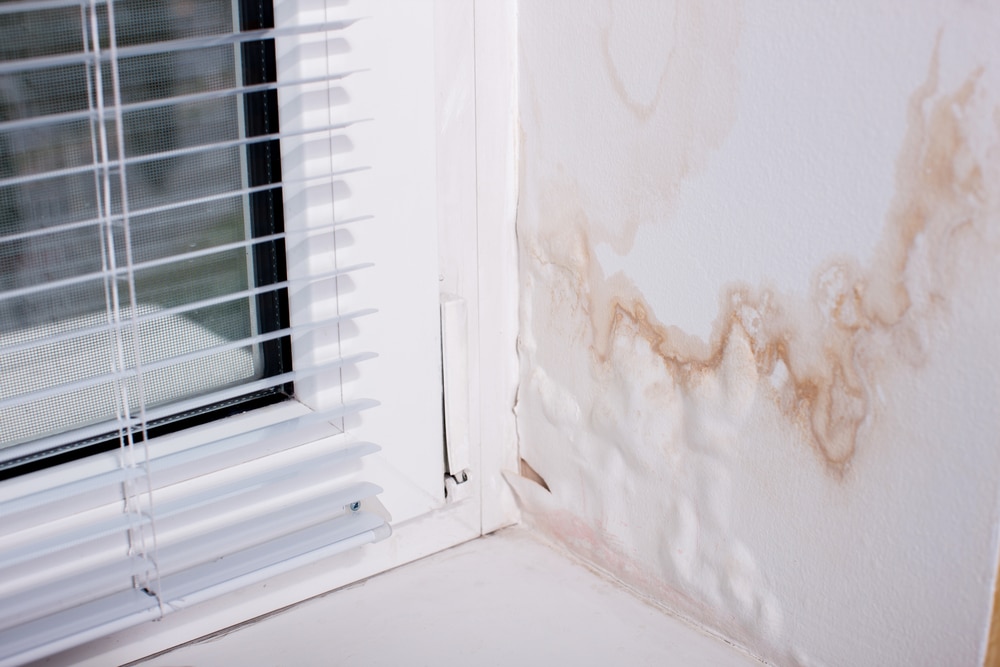
Technically, no, damp and mould are not the same thing. Colloquially, people tend to intertwine these words to mean the same thing, they may see mould and refer to it as damp for example.
In actuality, there is a distinction between Damp and mould. Mould occurs as a result of damp, damp itself is used to signify that than area is slightly wet, or not completely dry. Understandably, due to mould being everywhere that damp is found, the two words are naturally used to highlight the same problem by certain people.
Can mould form on dry surfaces?
The mould we are familiar with in our homes does not develop on any sort of dry surface. However, there may very well be certain strains of mould that can develop on dry surfaces.
How long can I stay in a room with mould
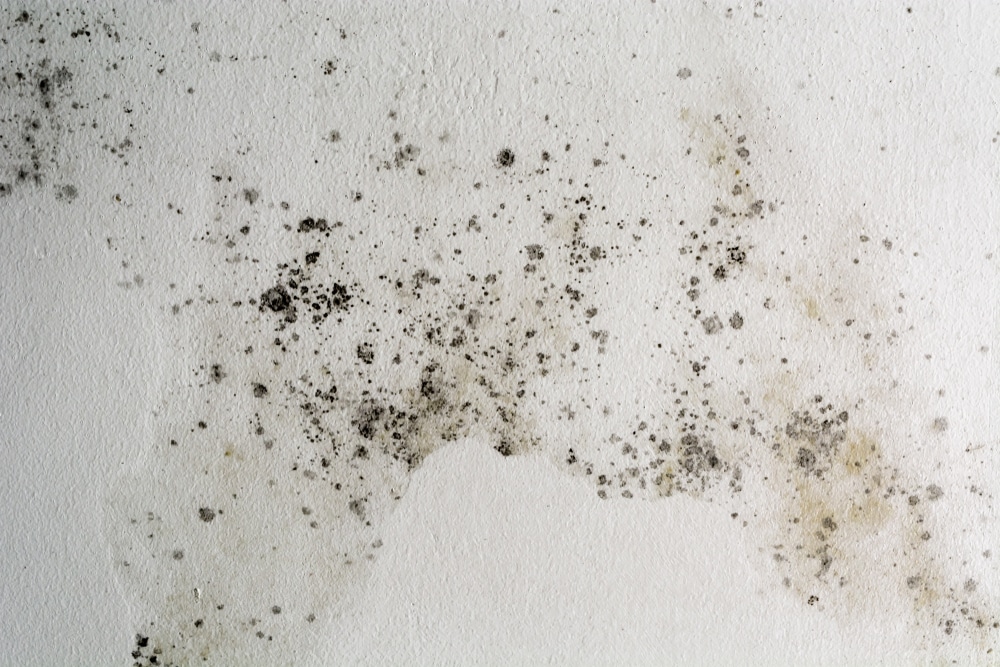
We advise you not to stay in a room with mould at all. Mould doesn’t affect people instantly, but the longer you spend around it, the worse it can make you feel, especially if you have an allergy to it.
The spores of mould can easily spread through the air, and get trapped on surfaces of your furniture, and even your clothes. We personally advise not to be in a room with mould.
We understand that in some instances, this can not be helped and you have to use the room in question, so what are your options? There are a few which we will list for you.
- Use a mould surface cleaner, or other mould treatment products if the mould returns after using this, there may be a leak in the area or inadequate insulation.
- Contact local mould removers, they will not only assess the cause but treat it too, but, this may cost more.
- Contact your landlord for them to make the enquires etc. If the landlord has highlighted issues like these as their responsibility in your tenancy agreement then you can legally ask them to take care of it. However, some landlords may take too long in doing this, so be careful with this, as it is not something you should leave.
How do I know mould is affecting me?
If you are falling ill regularly, or display any of the symptoms previously mentioned, then you may be having a reaction to mould. This may especially be the case if your doctor finds no cause for your weakened immune system.
How to clean mould
Cleaning mould can be done by using mould cleaning products such as anti-mould paint or an anti-mould surface cleaner, both of which we offer. Mould can also be cleaned using natural options such as distilled white vinegar. Its acidic nature can help break down mould for it to be removed.
If neither of these options work, you may be forced to seek the services of professional mould cleaners.
Of course when it comes to cleaning mould, you should also address the issue of damp that caused it, otherwise, it will keep returning no matter how often you clean it.
How to prevent damp
Preventing damp may be difficult if you have had it for a long time already, but firstly you should make sure your home is free from any leaks in your water pipes, as this is one of the most common factors in causing damp.
Additionally, doing a daily ventilation routine is a simple but extremely effective way of keeping damp away. A ventilation routine can be as little as 20 minutes a day. It helps regulate the temperature of your home and as a result, helps to prevent instances of condensation.
A ventilation routine looks like…
- Opening the windows of your home and apartment for around 20 minutes a day, creating a nice passage of air downstairs or upstairs (or across the floor you are in, if you are in an apartment.)
- Using a dehumidifier regularly
- Opening windows when showering or cooking, or if you have a large amount of guests at your home.
Contact I-Sells today
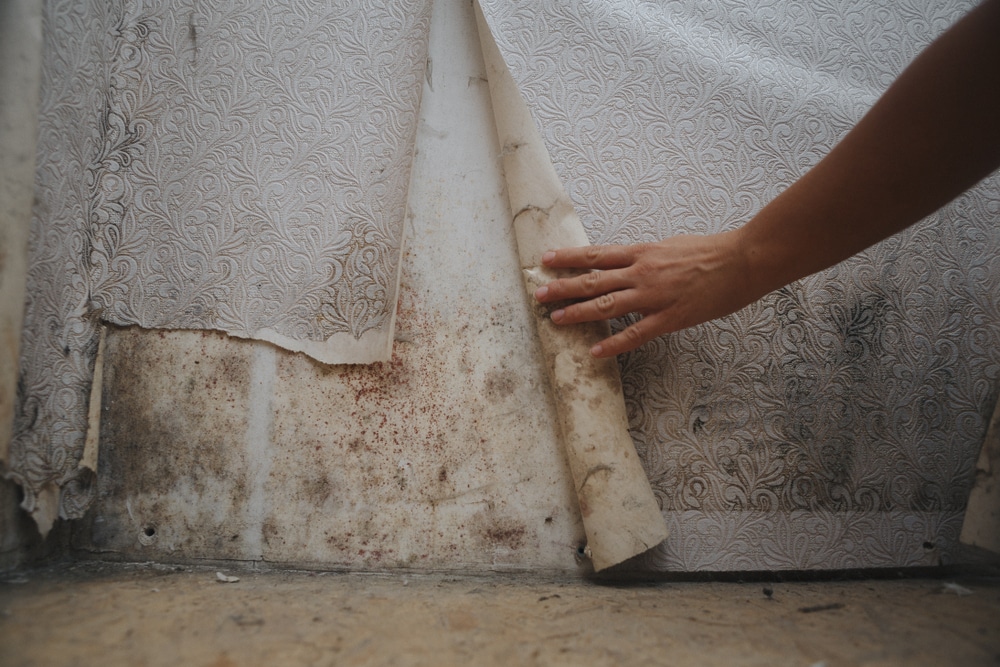
We at I-Sells endeavour to make sure our customers have all the information they need before choosing to invest in our mould solutions.
We hope to have answered the question ‘ Are mould and damp the same thing? ‘ . Be sure to visit our blog page to gain knowledge on the wide array of factors and issues surrounding ventilation, mould, condensation, and much more.
We understand you may have more questions, Do not hesitate to contact us for more information with regard to whatever you need our help with. If you’d like to send us an email, click here. For other contact options, see below:
Call us on 020 8463 9696
Visit us at our showroom:
*OPENING TIMES*
Monday – Friday: 8:00 am to 5:30 pm
Saturday: 9:00 am to 12:00 pm
Sunday: Closed
15 St John’s Parade
Sidcup, Kent
DA14 6ES
United Kingdom


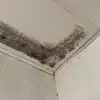



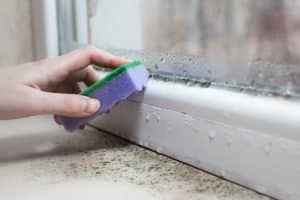






















Add comment
You must be logged in to post a comment.